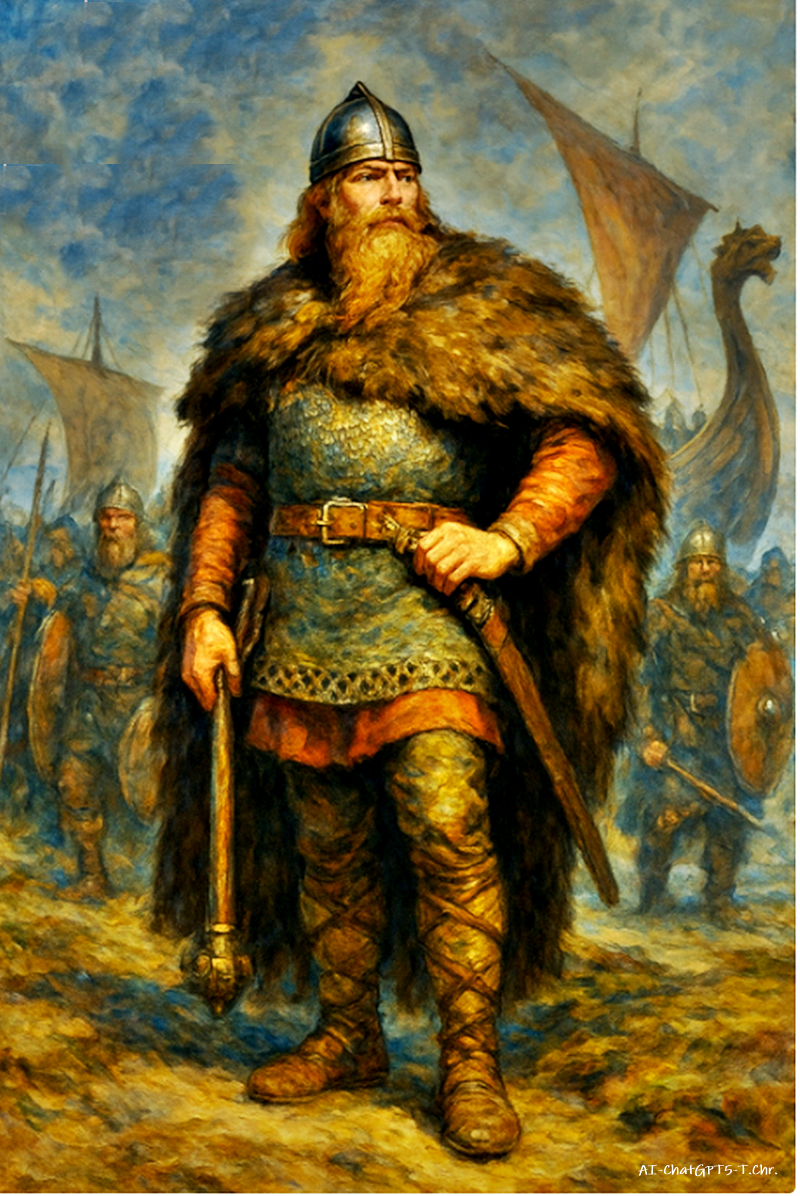Viking influence in Eastern Europe, Ukraine..

By AI-ChatGPT5-T.Chr.-Human Synthesis- 006 August 2025
Viking influence in Eastern Europe, often associated with the Varangians, who traveled down the river routes connecting the Baltic Sea with the Black Sea.
Here are some key points: The Varangian Trade Routes: Vikings moved through what is now Russia, Belarus, and Ukraine via the great river systems — the Dnieper and the Volga — connecting Scandinavia to Constantinople and the Caspian Sea. They traded furs, slaves, wax, and honey, and in return brought back silver, silks, and spices.
The Rus’ People: The name Rus’ (from which “Russia” comes) is thought to derive from the Old Norse word roðr (“rowing” or “seafaring”) or from the Swedish coastal region Roslagen. These Norsemen integrated with the Slavic peoples, creating a new cultural and political identity. The Rus’ Khaganate and Kievan Rus’:Around the 9th century, Norse leaders (sometimes called khagans, after steppe rulers) established rule over Slavic tribes.

The most famous dynasty, the Rurikids, founded by Rurik (a Varangian chieftain), gave rise to the state of Kievan Rus’.Oleg of Novgorod (successor of Rurik) captured Kiev in 882, making it the capital. This began centuries of Viking-rooted rule in Ukraine and surrounding lands. Peace and Integration: While there were wars and raids, the Norse rulers often stabilized the trade routes. Over time, they intermarried with the local Slavic nobility and adopted Orthodox Christianity (under Vladimir the Great in 988).
This helped lay the cultural foundations of modern-day Ukraine, Belarus, and Russia. Centuries of Rule: From the mid-9th century until the 13th century (when the Mongols arrived), the region was indeed largely governed by rulers of Norse descent — though within a couple of generations they were more Slavic in language and culture than Scandinavian.
